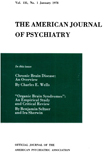PSYCHODYNAMIC PATTERNS IN THE HOMOSEXUAL SEX OFFENDER
Abstract
In this paper an attempt has been made to describe some of the psychodynamic factors in the homosexual pedophile. A description of the general research setting is followed by a discussion of 4 general formulations of the psychodynamics of the sexual offender. These are:
1. A consideration of the serious nature of the psychopathology present in the men studied, with indications that 76% of the homosexual pedophiles are using some type of schizophrenic adaptation.
2. The existence of marked fears of approaching an adult female sex object, with corresponding genital diminution fears.
3. Serious impairment of the capacity for abstract thinking, with impaired ability to utilize fantasy or other mechanisms involving abstractive capacity as an outlet for sexual conflicts and tensions.
4. Serious impairment of conscience formation, and resultant impairment of the restraining effects of conscience on overt behavior.
The serious character of the psychopathology in the sexual offenders makes therapeutic approaches, based on the formulation that these are primarily psychoneurotic disturbances, quite ineffective. Some of the therapeutic efforts utilizing organic therapies, particularly electroshock, are described.
Access content
To read the fulltext, please use one of the options below to sign in or purchase access.- Personal login
- Institutional Login
- Sign in via OpenAthens
- Register for access
-
Please login/register if you wish to pair your device and check access availability.
Not a subscriber?
PsychiatryOnline subscription options offer access to the DSM-5 library, books, journals, CME, and patient resources. This all-in-one virtual library provides psychiatrists and mental health professionals with key resources for diagnosis, treatment, research, and professional development.
Need more help? PsychiatryOnline Customer Service may be reached by emailing [email protected] or by calling 800-368-5777 (in the U.S.) or 703-907-7322 (outside the U.S.).



